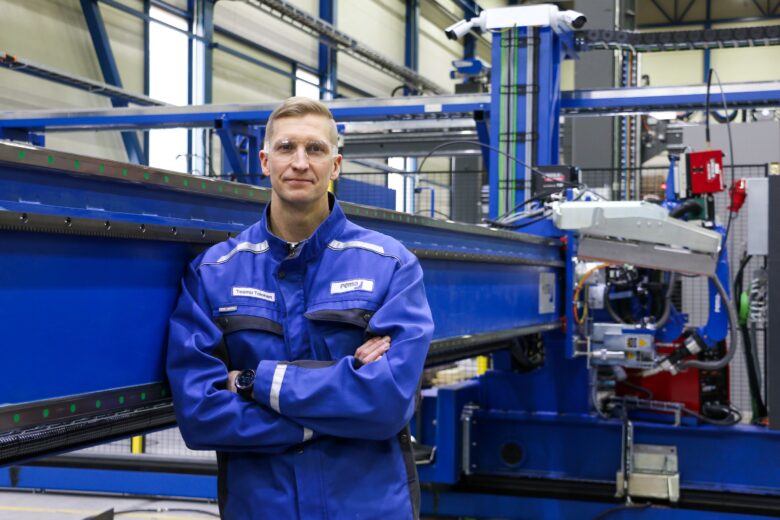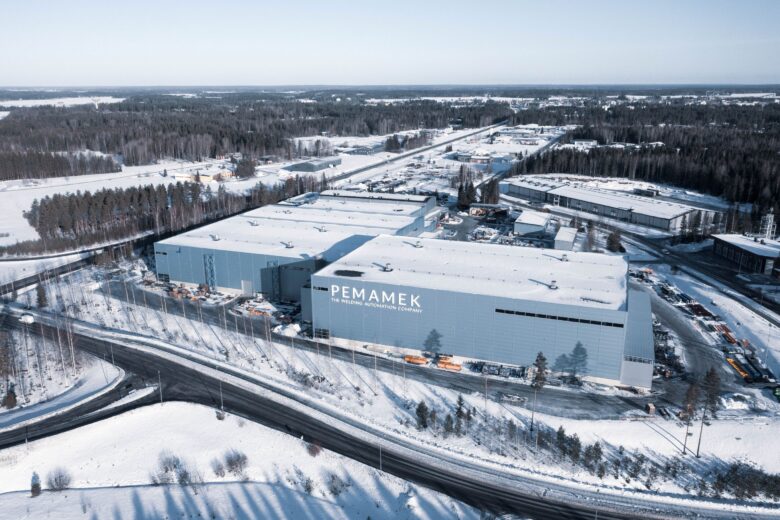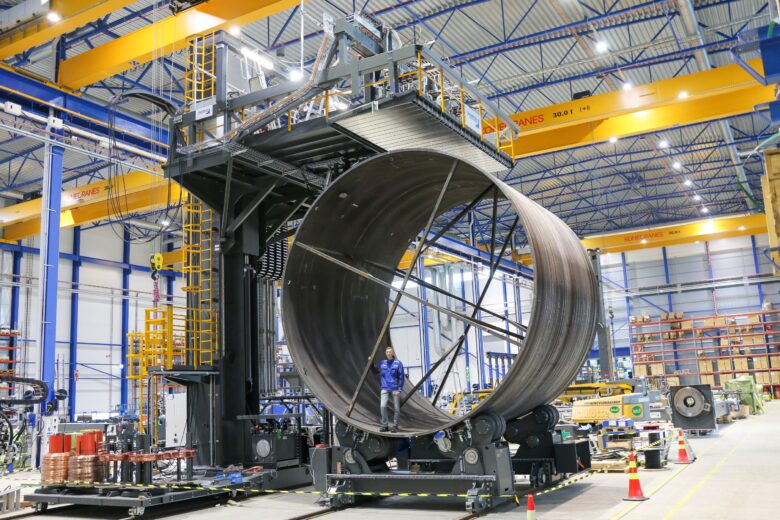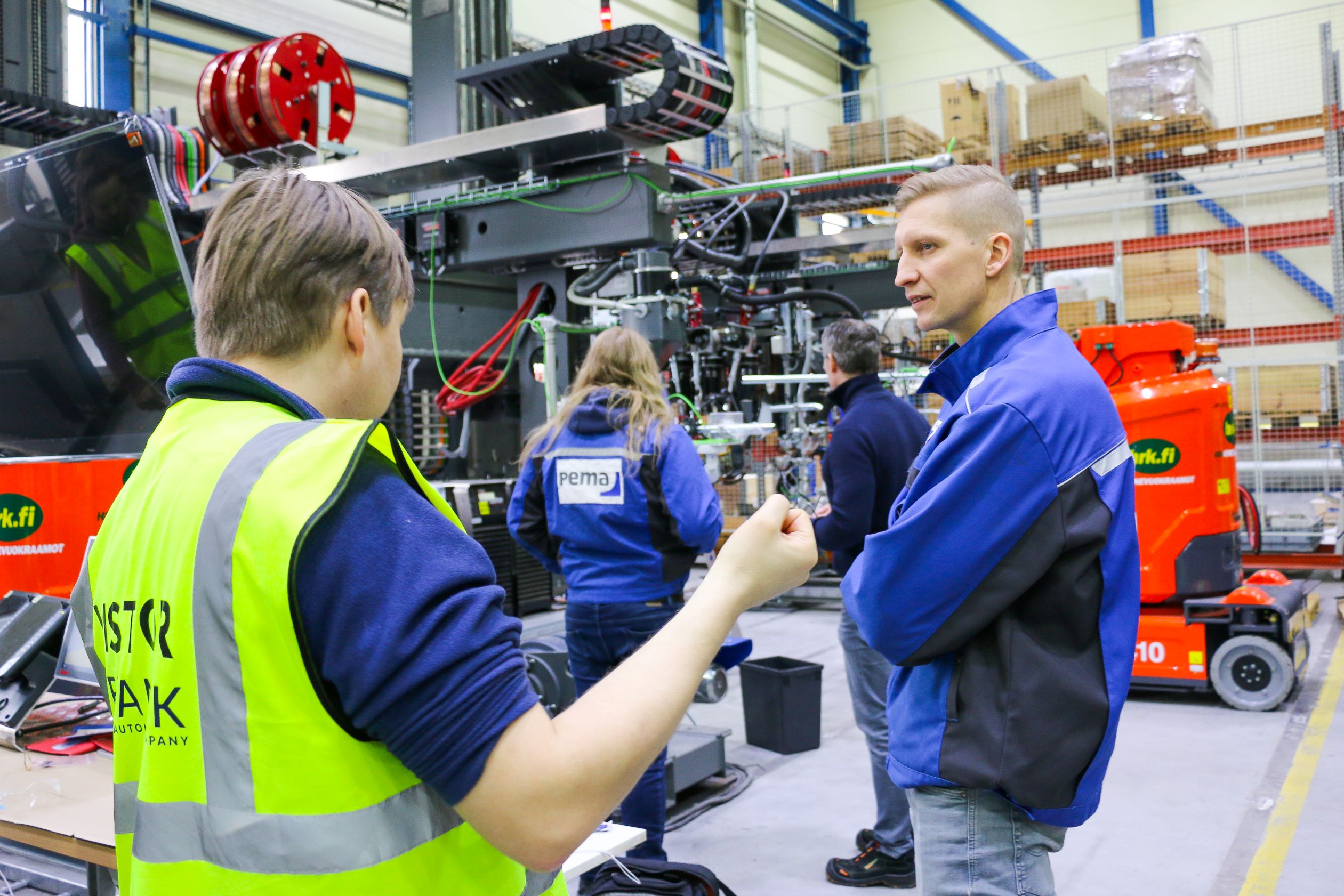Pemamek’s production automation solutions are born through the expertise of a multidisciplinary work community. The Finnish heavy industry technology company’s growth leans on constant R&D efforts.
The welding automation company Pemamek is experiencing a period of strong growth. The company’s turnover has grown from 60 million to 130 million euros in the past couple of years.
Chief Technology Officer Teemu Tolonen says that the growth is especially due to the increased demand in offshore wind energy and success in shipyard projects globally.
– The shipyard business has traditionally been the strongest cornerstone of our business, but now wind energy has risen to be as strong or even a stronger cornerstone.

Pemamek provides welding and production automation solutions and assembly stations for heavy industry in over 50 countries. In addition to shipbuilding and wind energy, customer sectors include heavy equipment, offshore and process equipment, power generation and general fabrication.
The company’s welding automation solutions can process even massive workpieces. For instance, in shipyards they are used in making hulls, in wind energy industry wind turbine towers and their foundations.
Knowhow as a Key Strength
According to Teemu Tolonen, overall expertise is Pemamek’s key competitive advantage in the global market. The value of the company’s product is not just in the machinery but also in the knowhow and process expertise that has gone into developing the product-related technology.
– Pemamek’s specific strength is the most technologically advanced production technology in different segments. That is our main selling point.
Tolonen thinks that active research and development (R&D) guarantees Pemamek’s success.
The company’s in-house investment in R&D is significant: over 50 of the company’s 400 employees work in the Technology Department. That is where the new solutions are born, usually alongside customer projects.
– We aim to develop our key technologies proactively and to think what we are going to need in our products and projects in the future, Tolonen says.
Pemamek’s Technology Department consists of various professionals in the fields of software developing, mechanics, automation, electrical engineering, robotics, and process technology.
– An interesting detail is that, despite we are talking about heavy industry, our biggest R&D team is the software developing team, Tolonen says.

R&D Funding Brings Stability in Research
Pemamek does R&D constantly with own resources, but R&D funding also plays a significant role. Tolonen thinks that the funding brings stability in the company’s R&D work.
– It also enables the kind of innovations that can’t be predicted in advance.
Pemamek applies for research funding usually for early-stage research and development. According to Tolonen, counting the payback period for a research investment is most difficult when the new solution is only just taking shape.
The company has had three significant Business Finland funded projects running since the year 2022. One of them focuses on developing future solutions for wind energy construction.
– Offshore wind turbines and their towers and foundations have grown so big that the existing production technologies, machinery and equipment are no longer working. In the project we are anticipating, how the towers and foundations of these huge power stations can be built in the future, Tolonen says.

The second project focuses on the welding automation of aluminium structures. Aluminium welding is more demanding than steel welding for instance because it reacts so strongly to heat.
– Aluminium is lighter than steel, so different industries, for example the marine industry, the rail traffic industry and the road traffic industry could save energy, the environment and money by using it, Tolonen explains.
The third project has to do with the digitalisation of product automation. The focus is for instance on the development of system integration. The idea is that data would transfer seamlessly between Pemamek’s and its customers’ systems.

Towards novel solutions
Even though Pemamek has made a growth leap, one cannot become complacent with the fine situation, Teemu Tolonen says. If the company aims to stay in the forefront of technological development, new solutions must be created all the time.
– We must do market research constantly and understand global trends and technology.
Pemamek’s growth also leans on competent staff. According to Tolonen, finding the appropriate specialists requires constant effort. He thinks that especially robotics training should be increased and developed in Finland.
– It is the kind of knowhow that will be needed in all industries in the future.
Based in Loimaa, a countryside town in Southwest Finland, Pemamek cooperates especially with education institutions in the nearby cities of Turku and Tampere. Many young talents find their way to the company through thesis work, an internship or a summer job.
The company is often present in student events. Future professionals’ perceptions matter.
– We are producing smart robotics with our own software. Even though we have a global clientele, I think it is important to highlight also here in Finland that Pemamek is a technology company, Teemu Tolonen says.
Text: Heidi Pelander
Photos: Heidi Pelander and Pemamek
This article is part of the TKI-kompassi project, funded by the Regional Council of Southwest Finland.

